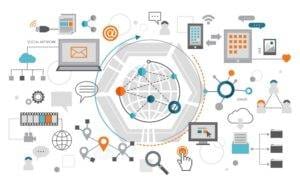“Sometimes you make the right decision, sometimes you make the decision right.”
Dr. Phil McGraw
As executives, our choices impact every rung of the ladder, from directors to managers to supervisors to workers on the front lines. Our role is, above all, to make sound decisions on behalf of the entire organization.
At any given moment, an executive is engaging in some element of the decision-making process: managing resources, setting strategies, handling crises, coming up with ideas, or reviewing alternatives. The to-do list never ends, and it’s safe to say that every executive is familiar with the task of decision-making.
The stakes of those decisions evolve as one climbs the organizational hierarchy. While lower-level managers might be deciding on the right vendor or the best marketing campaign, executives are choosing the optimal growth path, the most sustainable business model, or the most promising market to enter. The far-reaching impact of such decisions calls for a toolkit that goes beyond intuition and experience.
Rational decision-making is the model that fills this requirement. This process, built upon clear, logical, and practical foundations, guides executives in making critical decisions that align with their organization’s strategic goals. In this guide, we’ll explore rational decision-making from its inception to its application. We’ll delve into its principles, functions, and potential pitfalls, illustrating its significant role in empowering executives to make the decision right.

The Rational Approach: Inception and Evolution
Decision-making is an age-old art. Though the ancient Greek method of interpreting supernatural signs from the gods has since receded, we still borrow plenty of ideas from our predecessors.
Mathematics, psychology, sociology, economics, and political science intersect to compose the study of making decisions. Historians analyze the choices made by leaders at pivotal moments, sociology examines how the social environment shapes our behavior, and mathematics applies quantitative methods to streamline complex situations into actionable data. These perspectives merge to create a comprehensive understanding of decision-making processes, providing a roadmap for effective and strategic choices in the face of uncertainty.
From a business perspective, our research into these areas stems from a practical desire: to help executives achieve better outcomes. And while good decisions don’t necessarily guarantee good outcomes, they certainly increase the chances.
When Rational Decision-Making Entered the Business World
Rational decision-making is rooted in the 18th century, during the birth of economic theory. In this era, philosophers and early economists began to explore the idea of human beings as rational actors capable of making decisions that maximize their own benefit or utility.
The concept was coined “rational choice theory,” and it was the backbone of economic theory for centuries. It was widely accepted that, given all the necessary information, individuals would make decisions that best serve their self-interest. This theory posited that consumers, managers, and even governments could be viewed as rational decision-makers, pursuing goals systematically and purposefully.
Transposing Rational Choice to Organizational Decisions
The transition of rational choice theory from a purely economic principle to a management tool happened gradually. However, it wasn’t until the mid-20th century that the concept found its way into boardrooms and C-suites. This was a time when corporations started growing exponentially, necessitating a scientific approach to decision-making that could handle the complexities of large-scale organizations.
Herbert Simon, a notable psychologist and economist, introduced the idea of ‘bounded rationality,’ addressing the constraints decision-makers face in reality. While classic rational choice theory assumed perfect knowledge and unlimited computational abilities, Simon acknowledged that these assumptions often fall short in the real world. Managers and executives operate within limited information, resources, and time, hence the decision-making process is ‘bounded’ by these constraints.
This understanding paved the way for the rational decision-making model as we know it today – a structured, systematic process that aims to optimize decision outcomes while acknowledging the realities of decision-making in a complex, amorphous world.
The Art of Making The Right Choices
Smart people make dumb decisions all the time. A seasoned executive might stick to a failing strategy because they’re too attached to the idea, or a successful business might miss a key market trend because it’s too focused on its current operations. It’s the reason why half of the U.S. Congress doesn’t believe in climate change, despite 97% of the scientific community agreeing that it is a real threat to our environment.
Missing or insufficient information, pressing deadlines, limited emotional or physical resources, or the prevailing opinions of our communities: there are many reasons why smart people may make poor decisions. Nobody is immune to a lapse in judgment, which is why it’s essential to understand the cognitive biases that cloud our judgment in making good decisions.
Cognitive Biases and Their Impact
Cognitive biases, inherent thinking errors humans make when processing information, often lead to irrational decisions. For instance, the sunk cost fallacy might lead executives to invest further in a doomed project just because they have already invested heavily and don’t want to ‘waste’ the initial investment. This bias can make it difficult to abandon the project, even when all signs point to its failure.
Confirmation Bias
A notable cognitive bias is confirmation bias. This is our tendency to favor information that confirms our pre-existing beliefs or values while dismissing information that contradicts them. One of the most infamous examples of corporate confirmation bias is the downfall of the company, Kodak. In the generation of the “Kodak moment”, the company owned 90% of the market for film and cameras. By 2012, it went bankrupt. What went wrong?
In short, Kodak failed to adapt to trends in the market and became obsolete. As leaders in photographic film, Kodak pioneered one of the first digital cameras but chose not to capitalize on it, fearing it would eat into their traditional film business. Despite the growing evidence and market trends pointing to the rise of digital photography, Kodak’s leaders chose to look the other way. This classic example of confirmation bias saw Kodak’s executives favor their belief in the enduring dominance of traditional film, dismissing the threat that digital technology posed to their business.
Their unwillingness to consider contradictory evidence proved to be a critical mistake. The digital revolution in photography, which Kodak had the tools to lead, was happening with or without them. The industry moved on, and Kodak, stuck in its paradigm of traditional film photography, was left behind, eventually leading to its bankruptcy.
Groupthink: When Majority Overrules Rationality
Groupthink is a phenomenon that occurs when the desire for harmony in a decision-making group overrides a realistic appraisal of alternatives. It can lead to irrational or dysfunctional decision-making outcomes, as group members suppress dissenting viewpoints, isolate themselves from outside influences, and make decisions without critically testing, analyzing, and evaluating ideas.
Given these cognitive biases and pitfalls, how can an executive make rational decisions? Let’s revisit the concept of ‘bounded rationality’ presented by Herbert Simon. Instead of seeking an unattainable perfect decision, executives should strive for a ‘satisficing’ decision – one that is good enough and feasible within the given constraints.
The Rational Decision-Making Process As We Know It Today
Rational decision-making, as understood and applied today, comprises a sequence of steps that provide a systematic pathway from problem identification to solution implementation. Let’s explore these steps in detail.
Step 1: Identify the Problem or Decision to be Made
All decisions stem from a problem or an opportunity. An executive’s first task is identifying and clearly defining this problem or decision. This involves understanding the scope of the issue and its implications for the organization.
Step 2: Gather Relevant Information
Informed decisions require robust data. Executives need to gather all relevant information related to the decision or problem at hand. This could involve market research, financial analysis, consultation with team members, or any other method that can provide valuable insights.
Step 3: Identify Alternatives
Rarely is there a single solution to a problem. In this step, executives need to identify and list possible alternatives. Creativity and a broad viewpoint can prove beneficial here, as more options generally lead to a better final decision.
Step 4: Evaluate Alternatives
Each alternative is then evaluated against the others based on several factors such as cost, feasibility, alignment with organizational goals, potential risks, and expected outcomes. This is the step where analytical tools and decision-making models can be of great use.
Step 5: Make a Decision
Based on the evaluation, one alternative is selected as the decision to implement. It’s important to document the rationale behind the decision, both for future reference and to communicate the process to stakeholders.
Step 6: Implement the Decision
A decision means little without action. The chosen alternative needs to be implemented through a clear and detailed plan that includes who will be responsible for what, timelines, resources required, and any potential contingencies.
Step 7: Evaluate the Decision
Finally, after the decision has been implemented and sufficient time has passed to observe the results, it’s important to evaluate the effectiveness of the decision. Was the problem solved? Did the decision lead to the expected outcomes? This step allows for learning and improvement in future decision-making processes.
The rational decision-making model serves as a guide, ensuring executives navigate the decision-making process in a methodical, evidence-based manner.
Rational Decision-Making and Emotional Intelligence: A Dynamic Duo
At this point, it may seem as though rational decision-making is a calculated, emotionless process. It’s anything but. While this process emphasizes logical analysis and structured approaches, emotional intelligence plays an integral role in enriching the decision-making process.
The interplay between rationality and emotion is nuanced. Some might assume these two realms exist at opposing ends of a spectrum – with cold, hard facts on one side and warm, fuzzy feelings on the other. However, emotional intelligence doesn’t contradict or sideline rationality; it complements and enhances it.
Emotions carry valuable information about our environment and our reactions to it. They serve as feedback mechanisms that signal when we need to pay attention, what we should care about, and how our decisions might affect others. When managed appropriately, emotions can inform the rational decision-making process without dominating it.
Consider an executive who’s contemplating layoffs to cut costs. On the surface, it’s a decision that addresses the business’s financial challenges. However, if this executive taps into their emotional intelligence, they might understand the emotional and morale implications this decision could have on the remaining employees. This awareness doesn’t necessarily change the decision but informs the execution – perhaps prompting a more empathetic communication strategy or the provision of outplacement services.
While rational decision-making provides the structure and process for making sound decisions, emotional intelligence humanizes these decisions. It ensures that executives not only make the right decisions but also make the decisions right – in a way that respects the human element and strengthens the organization’s culture and values.
The intersection of rational decision-making and emotional intelligence marks the evolution of the decision-making process – from purely calculative or intuitive to balanced and empathetic. It signifies an era where executives are not just decision-makers but also leaders who inspire trust, foster growth, and generate long-lasting impact. Embracing this dual approach is the key to robust, sustainable decision-making that propels organizations forward while remaining true to their human core.
Ready to Make the Decision Right?
Whether you’re deciding on strategic direction, choosing a business model, or determining the optimal growth path, rational decision-making is an invaluable tool in your executive toolkit. It helps you make the decision right, even when the right decision isn’t immediately apparent.
If you’re an executive looking to refine your decision-making skills further, consider partnering with the seasoned coaches from Arden Executive Coaching. Our executive coaches bring a wealth of experience and a deep understanding of effective decision-making strategies. We can help you navigate your leadership journey with greater confidence and success. Reach out to Arden Coaching today.











